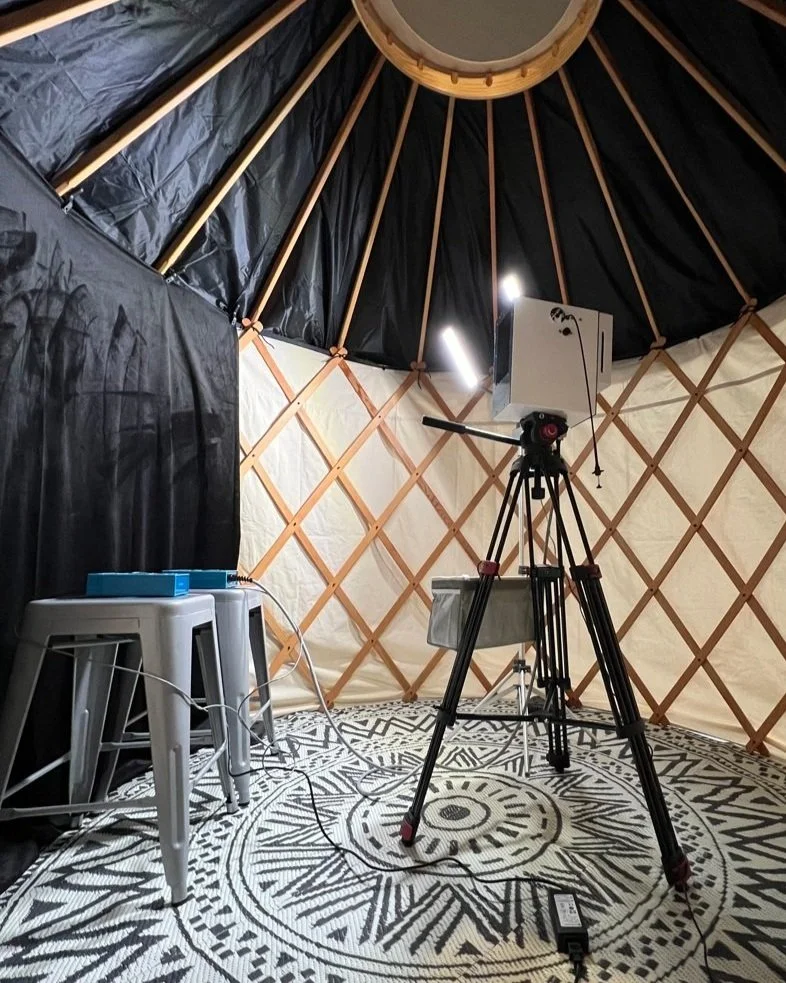What is Aura Photography and How Does It Work?
Aura photography is a fascinating technique that captures the unique energy field that surrounds every living being. This vibrant, invisible energy is often referred to as an "aura," and it is said to reflect a person’s emotions, thoughts, spiritual state, and even physical health. For those curious about their energy and how it manifests, aura photography offers a way to visually interpret this often intangible aspect of ourselves.
What is Aura Photography?
At its core, aura photography is a method of capturing the electromagnetic field that surrounds a person. This field, often called the "aura," is an energy pattern that is thought to be unique to each individual, constantly changing based on their emotional state, physical health, and even their thoughts. Aura photography uses specialized technology to capture this energy field and translate it into a colorful image that reflects the person’s aura at that moment in time.
The Science Behind Aura Photography
Aura photography combines principles of biofeedback, energy fields, and electrophotography. The camera used in aura photography is often called a Kirlian camera, named after the Russian scientists Semyon and Valentina Kirlian who first developed a method to capture energy fields in the 1930s. The Kirlian camera uses a high-voltage electromagnetic field to capture the energy that radiates from a person.
When a person places their hands on a set of electrodes connected to the camera, a small electrical charge is applied. This charge interacts with the energy field around the body, creating a glow that is captured by the camera. The result is a visual representation of the person’s aura, often displayed as a multi-colored image.
How the Camera Captures the Energy Field
Aura photography works by detecting the bioenergetic emissions from your body, which are believed to be influenced by your mental, emotional, and physical states. The camera uses sensors that detect the energy emanating from your hands, which act as conductors of the body's subtle energy. These sensors then create a digital image that displays the colors and patterns surrounding you.
Different colors in the aura are said to correspond to various aspects of the self, including emotions, personality traits, and overall well-being. The technology is sensitive enough to capture these nuances, creating a unique image that can provide a deeper understanding of a person’s energy field at any given moment.
How the Camera Captures the Energy Field
Aura photography works by detecting the bioenergetic emissions from your body, which are believed to be influenced by your mental, emotional, and physical states. The camera uses sensors that detect the energy emanating from your hands, which act as conductors of the body's subtle energy. These sensors then create a digital image that displays the colors and patterns surrounding you.
Different colors in the aura are said to correspond to various aspects of the self, including emotions, personality traits, and overall well-being. The technology is sensitive enough to capture these nuances, creating a unique image that can provide a deeper understanding of a person’s energy field at any given moment.
What Do the Colors in Your Aura Represent?
Each color in your aura holds symbolic meaning, reflecting different qualities and states of being. While interpretations may vary slightly, the general meanings are as follows:
Red: Often associated with passion, energy, and vitality, a red aura can indicate someone who is strong-willed and energetic.
Orange: This color represents creativity, joy, and enthusiasm. It may indicate a person who is social and driven by a need for personal fulfillment.
Yellow: A yellow aura typically signifies intellect, curiosity, and positivity. People with this aura are often known for their optimism and intellectual pursuits.
Green: Green is linked to balance, healing, and compassion. It is often seen in individuals who have a strong connection to nature or who are empathetic and caring.
Blue: A blue aura is associated with calmness, communication, and truth. People with blue auras may be natural communicators, often speaking with clarity and honesty.
Violet: Often associated with spirituality, intuition, and higher consciousness, a violet aura is common in individuals who are highly intuitive or spiritually awakened.
White: White auras are believed to represent purity, new beginnings, and spiritual strength. It often signifies someone who is in a phase of renewal or inner peace.
✶ To learn more about color interpretations, you can visit our color interpretations page.
Can Aura Photography Really Capture Your Energy?
While aura photography may sound mystical, it is grounded in the science of energy fields and biofeedback. The colors and patterns captured are real, reflecting the person’s current emotional, physical, and spiritual state. Some practitioners believe that aura photography can provide insights into a person's emotional well-being, while others view it as a tool for personal growth and self-awareness.
Many people find the experience of seeing their aura to be enlightening, often giving them a greater sense of understanding about themselves. It’s also a unique and fun way to explore how your energy manifests, especially when shared with friends or loved ones.
Discover the Colors of Your Energy!
Aura photography is an innovative way to visually represent the energy field that surrounds us all. By capturing the colors and patterns of your aura, this technique provides a unique insight into your emotional, physical, and spiritual state. Whether you’re looking for a deeper connection to your inner self or simply curious about your aura, aura photography offers a fascinating glimpse into the energy that surrounds you.
If you’re interested in discovering what your aura looks like, check out events page and book a session with us today and get ready to see your unique energy in a whole new light!



